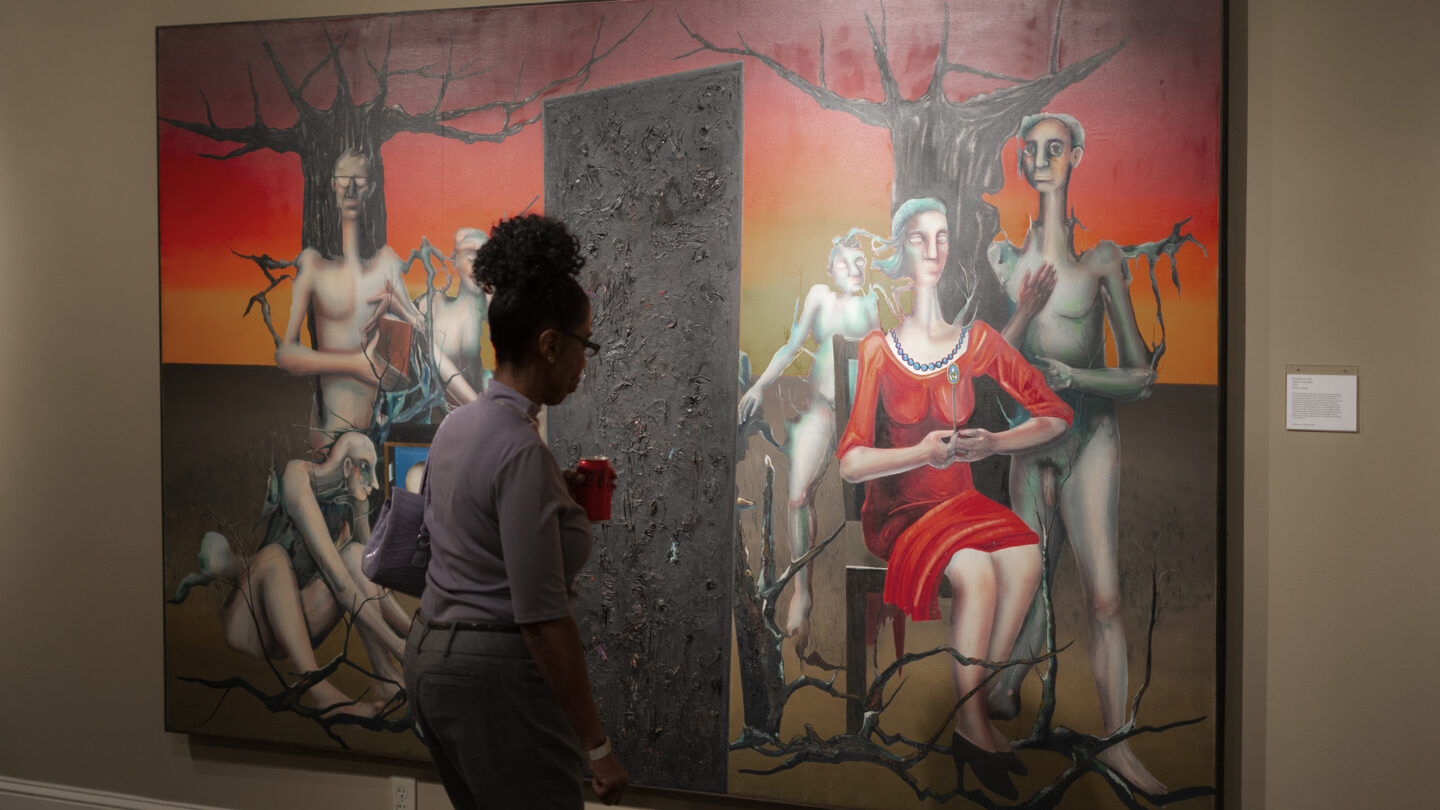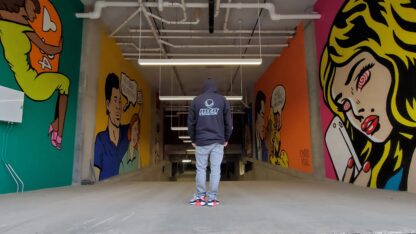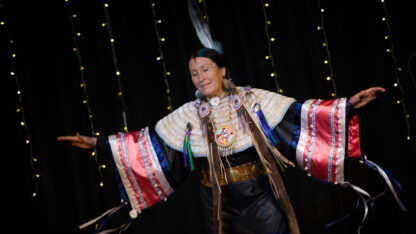A new exhibition of Surrealist works is on view at the Marietta Cobb Museum of Art

Surrealism as an art form has captured the imaginations of creatives since the movement emerged in the early 20th century. Visual journeys through unreal places and unpredictable juxtapositions of imagery jolt us awake and invite us to question our definitions of reality.
“More than Dreams: Exploring the Surreal in Art” is a new exhibition at the Marietta Cobb Museum of Art, on view now through Dec. 18. “City Lights” host Lois Reitzes spoke with the show’s co-curators, Madeline Beck and Carlos Solis, along with Clemens Bak, son of the late artist Bronislaw Bak, to talk about the transportive experience of the new collection.
Interview highlights:
Carlos Solis on painting dreams on canvas:
“I consider myself a traditional Surrealist artist. I’m a big fan of the old masters from the Dada group, Breton, Dali, Tanguy, de Chirico,” said Solis. “My work is based on dreams, visions with symbolic images, dream-like landscapes. So I started painting 20 years ago, Surrealism, and the reason I did that is because it was easy for me to express myself through the arts. I had these weird dreams and I didn’t know what to do with them, and I really enjoy painting so I basically combined those two elements.”
“All my paintings are full of symbols and messages. There is one in particular that refers to my culture in Venezuela, the folklore and mysticism that is practiced in my country. So there are legends, beliefs that I wanted to reflect in my paintings. There is a third religion in my country called María Lionza; it’s an entity or a spirit that a lot of people worship. It’s like Mother Nature,” Solis said.
On work by the late Bronislaw Bak:
“My father passed away in 1981 … but he would have been 100 years old this year when the show went up. So he’s from a slightly earlier generation,” explained Clemens Bak. “My father and mother studied art in Germany right after World War II; in fact, they were part of the first generation of artists who studied art after the fall of the Nazi era. And his work as well as my mother’s is reflective of their experiences in some ways.”
“The work that my father did for most of the early period … was hardly controversial. It was actually largely abstract; even his figurative work had no details. He worked in other mediums; he worked as a stained-glass artist, he did stained-glass windows, a designer. And he also did sculpture as well as taught at several colleges and universities,” Bak said. “The Surrealist work that he did, I think, is important in one context. What he was doing was to give us a critical look at the human psyche, I would say. And most of it, you will see, is ‘biomorphism’ in the sense that vegetation and things like that sort of morph into the bodies of the people who are fragmented in all the work.”
Other featured Surrealist luminaries from all over the world:
“There are six [artists]. So we have Alexander Burdysheff, and he was born and raised in the former Soviet Republic of Georgia,” said Beck. “Alexander’s work is incredibly abstract. I think it explores the more geometric abstraction and the more unexpected side of Surrealism. And then we have Gary Chapman, who was born and raised in Ohio, and he’s currently a professor at the University of Alabama in Birmingham, and his work is a little bit more I would almost say pop-art influenced. It’s a little more surreal in its imagery more so than in its concept. So people are really confounded by his images that combine flowers with weapons and that type of juxtaposition.”
“Then there’s Larkin Ford, who is a local Atlanta artist … His work is incredibly surreal, definitely in imagery; definitely one of the more dark or sometimes morose imagery that you’ll see in the exhibition. But the work that he contributed for this show is really exploring abstraction and the more conceptual side of Surrealism, and doing so through color and composition rather than just what people would just anticipate to be shocking imagery,” said Beck. “Vladimir Kush … is an incredibly commercially successful artist. He is a pioneer of what he calls ‘metaphorical realism,’ so he probably presents the work that is the most photo-realistic or hyper-realistic, but he presents scenarios that are absolutely fantastical and absurd.”
“More than Dreams: Exploring the Surreal in Art” is on view at the Marietta Cobb Museum of Art through Dec. 18. More information is available at mariettacobbartmuseum.org/exhibitions/more-than-dreams.








